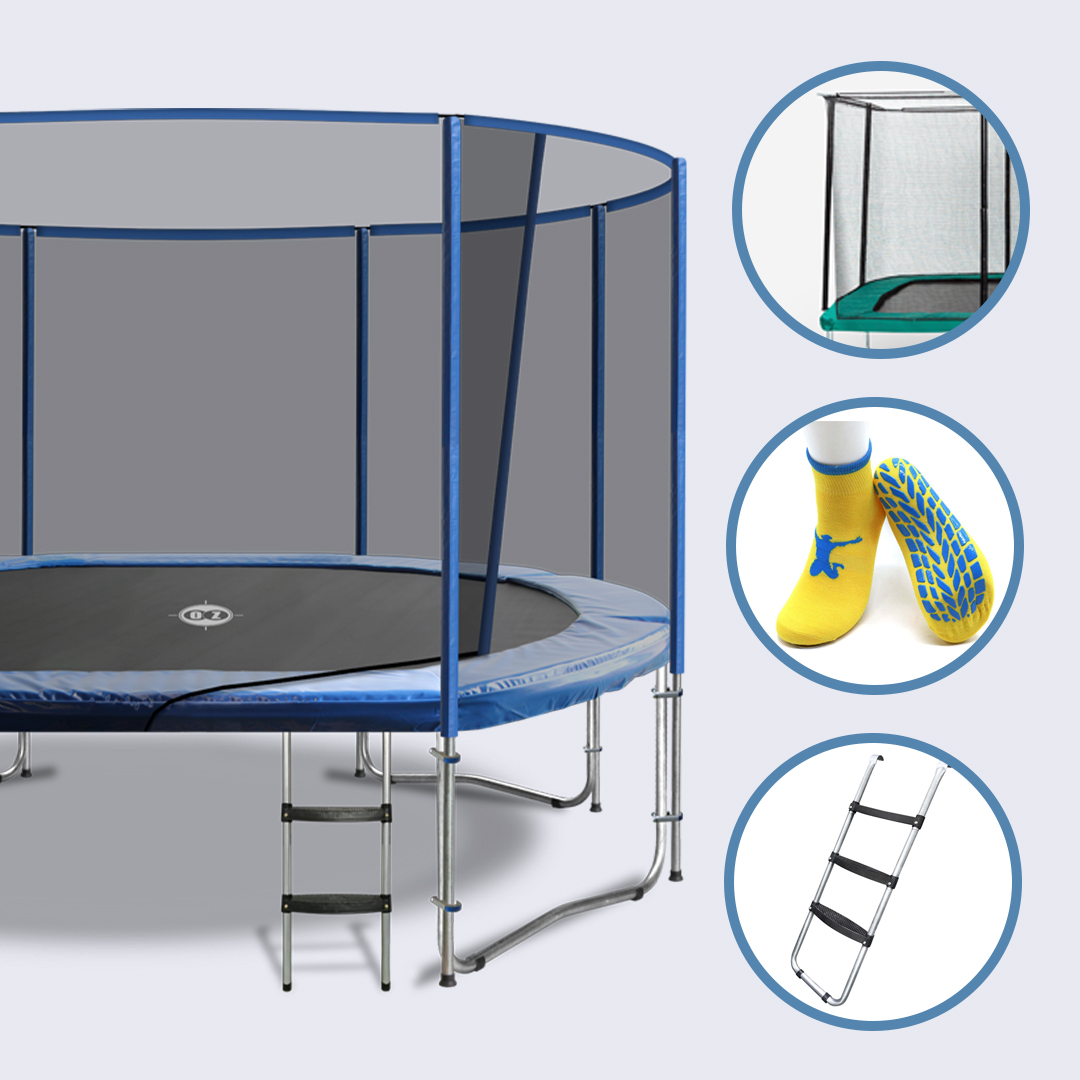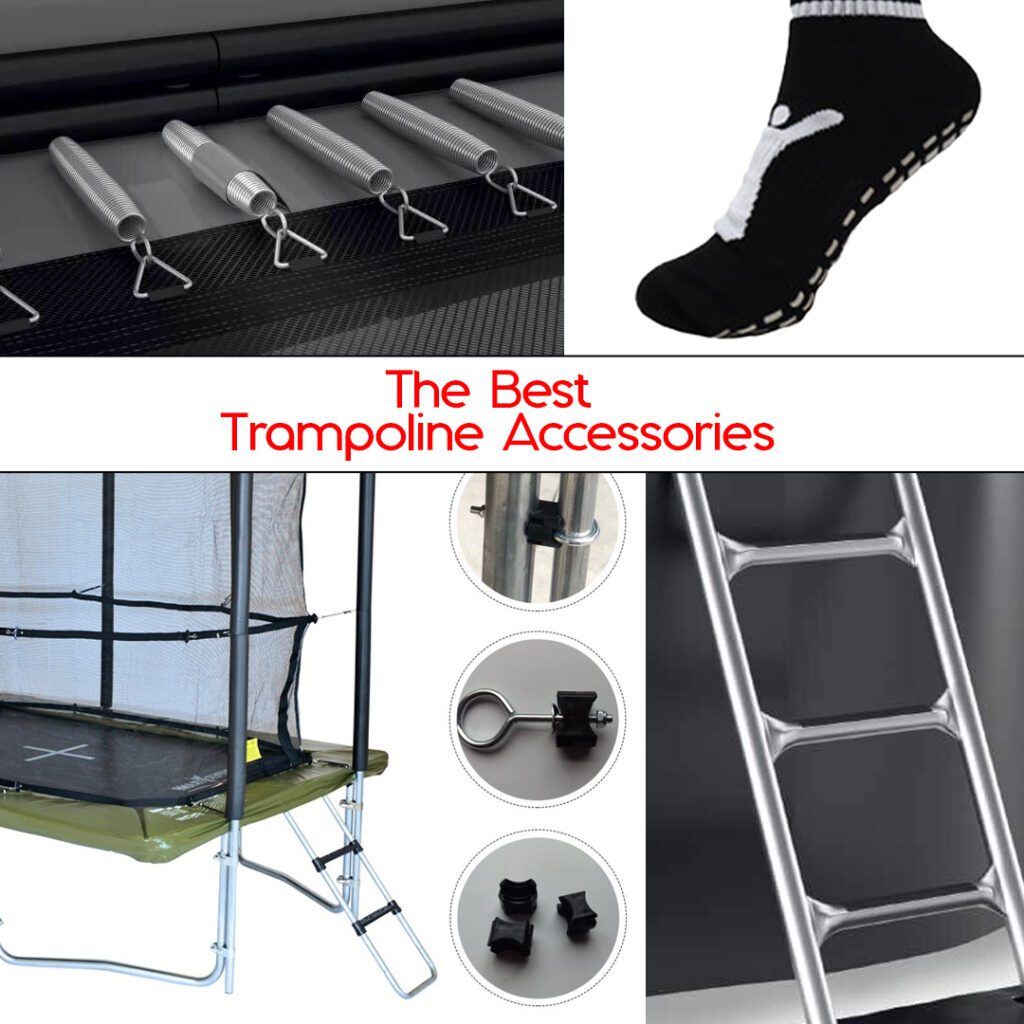There’s nothing quite like the thrill of bouncing on a trampoline. The exhilarating feeling of weightlessness as you soar up into the air is an experience like no other. To make your trampolining adventures even more fun and exciting, accessories can enhance your experience in many ways. Whether you’re looking to perform somersaults with the grace of an Olympic gymnast or just keep the kids entertained for hours, trampoline accessories are guaranteed to make your trampolining experience even better.
Table of Contents
ToggleTrampoline accessories allow you to customise your trampoline to suit your needs and add extra features for entertainment. Things like safety pads, nets, and ladders are must-haves for any trampoline to help prevent injury, but other accessories can make trampolining even more enjoyable.
In this blog, we will be discovering accessories that will increase your trampolining fun and make it better than ever.
Safety Enclosure Net
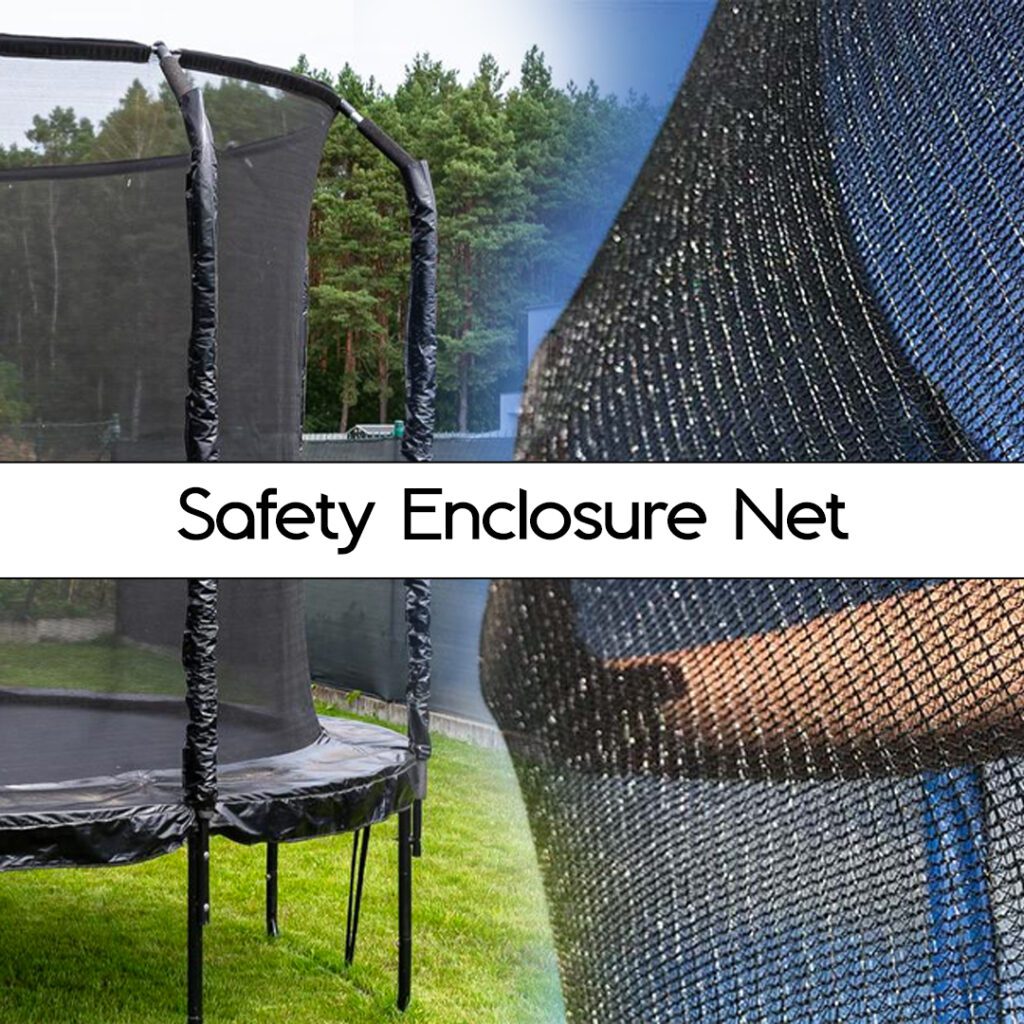
A safety enclosure net is one of the most important accessories you can get for your trampoline. It will give you peace of mind knowing you and your kids can bounce as high as you want without worrying about falling off the edge.
Key Considerations
When choosing a safety enclosure net, consider the following:
Mesh size: A smaller mesh size, around 1 inch or less, is best. This prevents fingers and toes from getting caught while still allowing maximum visibility.
Height: Look for a net that extends at least 5 to 6 feet from the edge of the trampoline mat, for a small 10ft trampoline to a large 14ft trampoline. This gives you adequate clearance for high bounces and flips.

Attachment: The net should attach securely around the trampoline frame with straps and buckles. Poles that slide into sleeves in the netting material are also very stable. Avoid nets that just tie on, as they can come loose over time.
Ease of installation: Look for a net that is relatively easy to install and take down for storage. A good one should only require basic tools and minimal hardware.
Adding a high-quality safety enclosure net to your trampoline will give you reassurance every time you bounce. Your trampolining experience will be safer, more enjoyable, and longer-lasting as a result.
Weather Covers
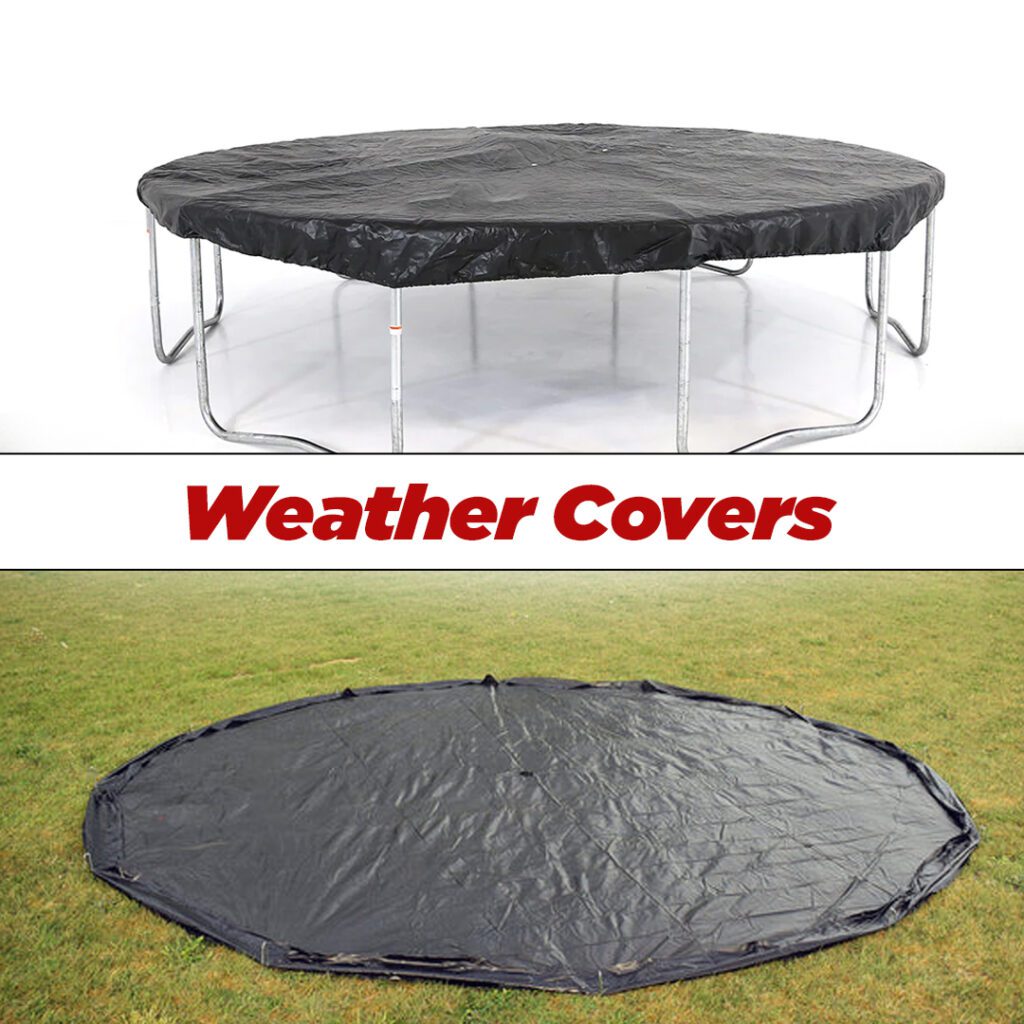
It is important to know how to choose a good quality trampoline weather cover. A weather cover is one of the best investments you can make for your trampoline. Protecting your trampoline from the elements will help ensure it lasts for many years of fun. There are a few options you can consider while choosing a trampoline cover:

Breathable Covers
For most weather conditions, a breathable cover made of polyethylene (PE) fabric is ideal. Look for covers specifically designed for trampolines, as they will have proper ventilation, resistant straps, and an elasticized edge to keep the cover securely in place during high winds.
All-Weather Covers
For harsher weather with heavy snowfall, an all-weather cover provides maximum protection. These covers are made of more durable materials like polypropylene (PP) that are fully waterproof yet still breathable. They can be used year-round but should be removed occasionally to air out the trampoline.
Installation and removal
To install a trampoline weather cover, secure it over the trampoline frame using the straps, clips, or elasticized edge provided. Pull it taut for the best protection. Remove covers seasonally or if there are a few days of warmer, drier weather. When removing a cover, inspect the trampoline for any damage or debris before using it.
Weather covers will help shield your trampoline springs, mat, and safety pads from rain, snow, and UV radiation. While an initial investment, the added life and protection provided to your trampoline make a cover very worthwhile.
Anchor Kit

An anchor kit is one of the most useful trampoline accessories you can invest in. It securely attaches your trampoline to the ground, providing stability even in windy or severe weather conditions.
The number of anchors needed depends on your trampoline size, location, and local weather conditions. As a general rule, use a minimum of 6 to 8 anchors for a small to mid-size round trampoline and at least 12 anchors for a large 12ft trampoline. Place anchors evenly around the outside of the trampoline frame, angling them outward at 45 degrees. Bury the anchors at least 10 to 15 inches deep to securely hold the frame in place.
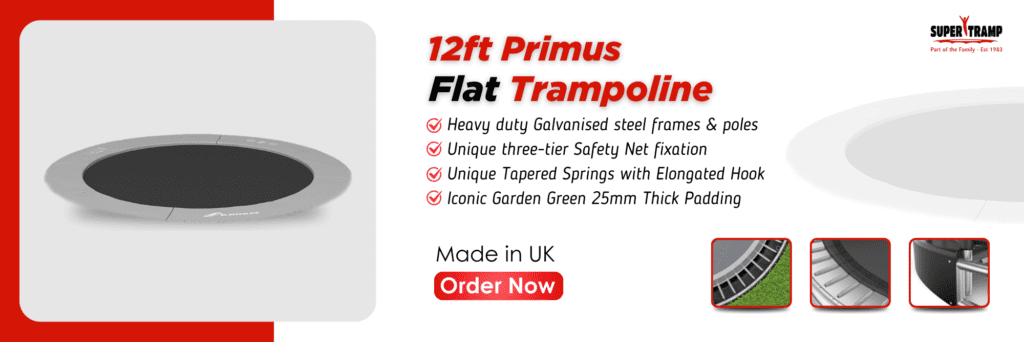
An anchor kit, when properly installed, will give you peace of mind that your trampoline is stable and secure, no matter the weather. Your trampoline will stay grounded even in the strongest of winds, allowing you to bounce without worry. An anchor kit is an investment that provides safety and security for your trampoline, so you can have years of bouncing enjoyment.
Trampoline Ladder
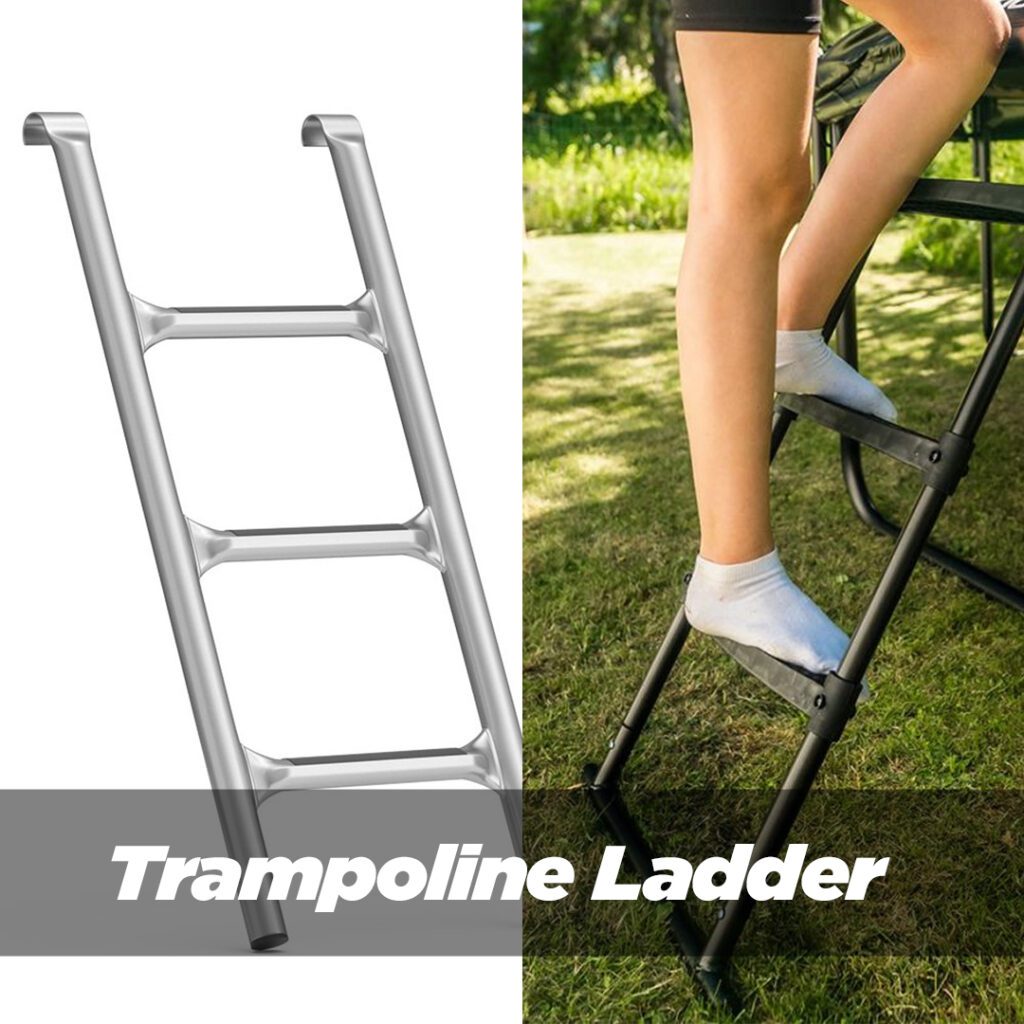
A trampoline ladder provides easy and safe access to your trampoline, allowing people of all ages and abilities to enjoy bouncing. Choosing a high-quality, stable ladder designed specifically for trampolines is important for safety.
Look for a trampoline ladder constructed of galvanised steel or aluminium for durability and weather resistance. Steel ladders tend to be more heavy-duty, while aluminium ones are lighter. In either case, make sure the ladder feels extremely stable and secure when climbing on and off the trampoline. The last thing you want is the ladder slipping or tipping over.
Ease of Use
A ladder with evenly spaced, wide rungs or steps will make it easiest to climb up and down. Rungs placed 10 to 12 inches apart are a comfortable distance for most people. Wider rungs, at least 6 to 8 inches deep, give you more foot support. Extendable ladders that adjust to different heights allow easy access for all ages and abilities.
For small children, a ladder with handrails provides an extra measure of safety and security. The handrails should run the full length of both sides of the ladder. As an alternative, spotters can stand next to the ladder, ready to catch little ones in case of slips or falls.
A trampoline ladder greatly enhances your trampoline enjoyment by providing simple and safe access for everyone in your family. Do some research on reputable brands and types of ladders to find one perfectly suited to your needs and budget. With the right ladder, the fun of bouncing can begin as soon as you step onto your trampoline!
Trampoline Socks

Trampoline socks are specifically designed to provide extra grip and prevent slips on the trampoline mat. Wearing regular socks or going barefoot can be dangerous, as they do not provide the necessary traction. Trampoline socks are fitted, non-slip socks made of a grippy, textured material that helps keep you stable as you jump.
The importance of non-slip socks
Trampolining involves a lot of jumping, bouncing, and aerial tricks. Without proper grip and control, injuries are more likely to occur. Trampoline socks provide extra traction so your feet do not slide out from under you, helping prevent sprains, strains, and falls. They also allow you to perform more advanced skills with confidence, knowing your footing is secure. For recreational jumping or fitness, trampoline socks enhance the safety, stability, and enjoyment of the activity.
Trampoline socks may seem like a small accessory, but they play an important role in safety and performance. Investing in a high-quality pair of non-slip trampoline socks is worth it to get the most out of your trampoline and minimise the risk of injury. With the right socks and by following general safety guidelines, you’ll be bouncing without worrying.
Trampoline Scooter
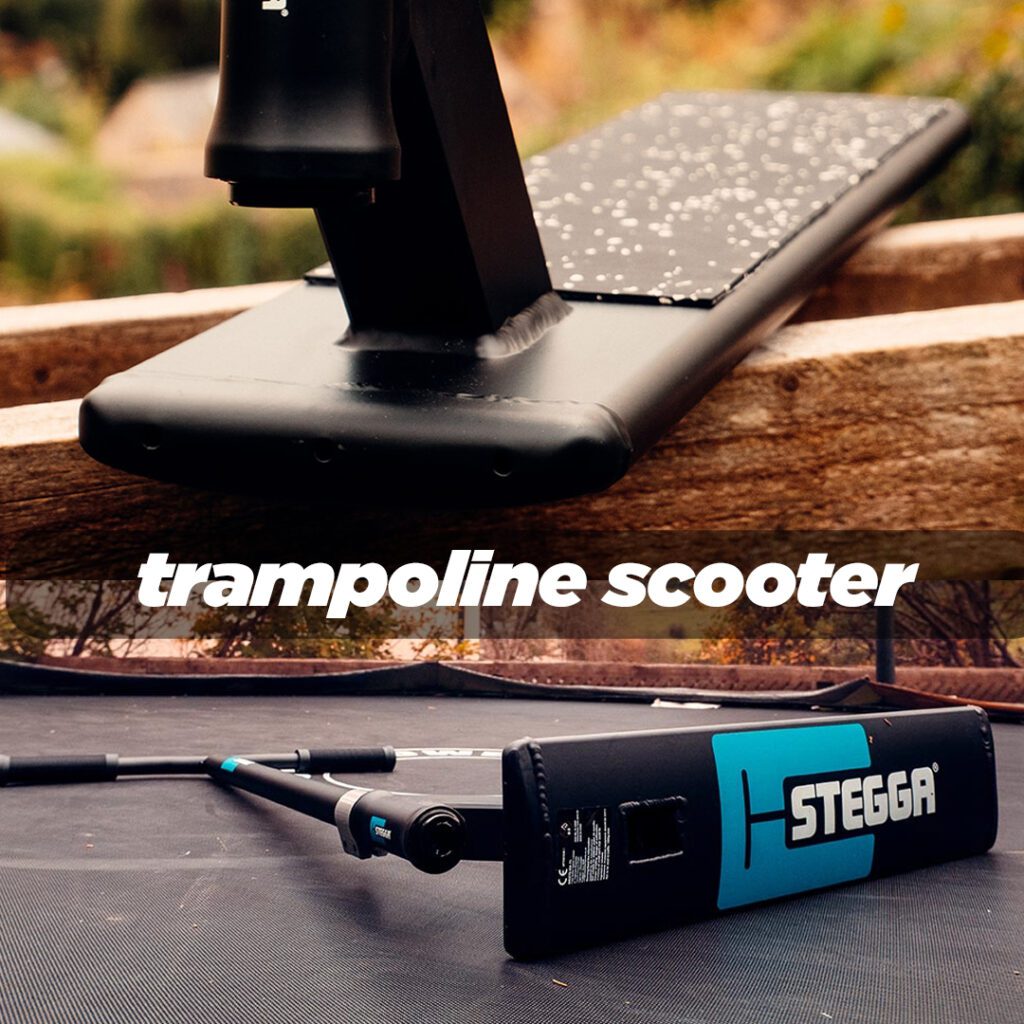
Trampoline scooters add an exciting new dimension to trampolining fun. These scooters attach to your feet, allowing you to glide, spin, and bounce across the trampoline mat. With a bit of practice, you’ll be performing tricks and flips in no time. However, there are some important safety considerations to keep in mind.
Safety First
Always wear appropriate safety gear, like a helmet and elbow and knee pads, when using a trampoline scooter. The scooter can make it easier to lose your balance and fall, especially when first learning. Pads will help prevent injury if you do take a tumble.
Start slowly and learn how the scooter responds to your movements and weight distribution before attempting any advanced tricks. Bounce gently at first, without the scooter, to get a feel for how the trampoline surface reacts. The scooter will amplify your momentum, so small bounces can send you flying high very quickly.
Learn how to stop safely. The best way is to bend your knees and lean slightly forward, dragging the front of the scooter along the trampoline mat. This will gradually slow your momentum without causing you to tip over. Practice this stopping technique before zooming around.
Follow the weight limits for your specific trampoline and scooter model. Only one person at a time should use the scooter, and do not overload the trampoline with too many people. This can damage the trampoline and scooter and increase the risk of collisions.
Spring Pulling Tool
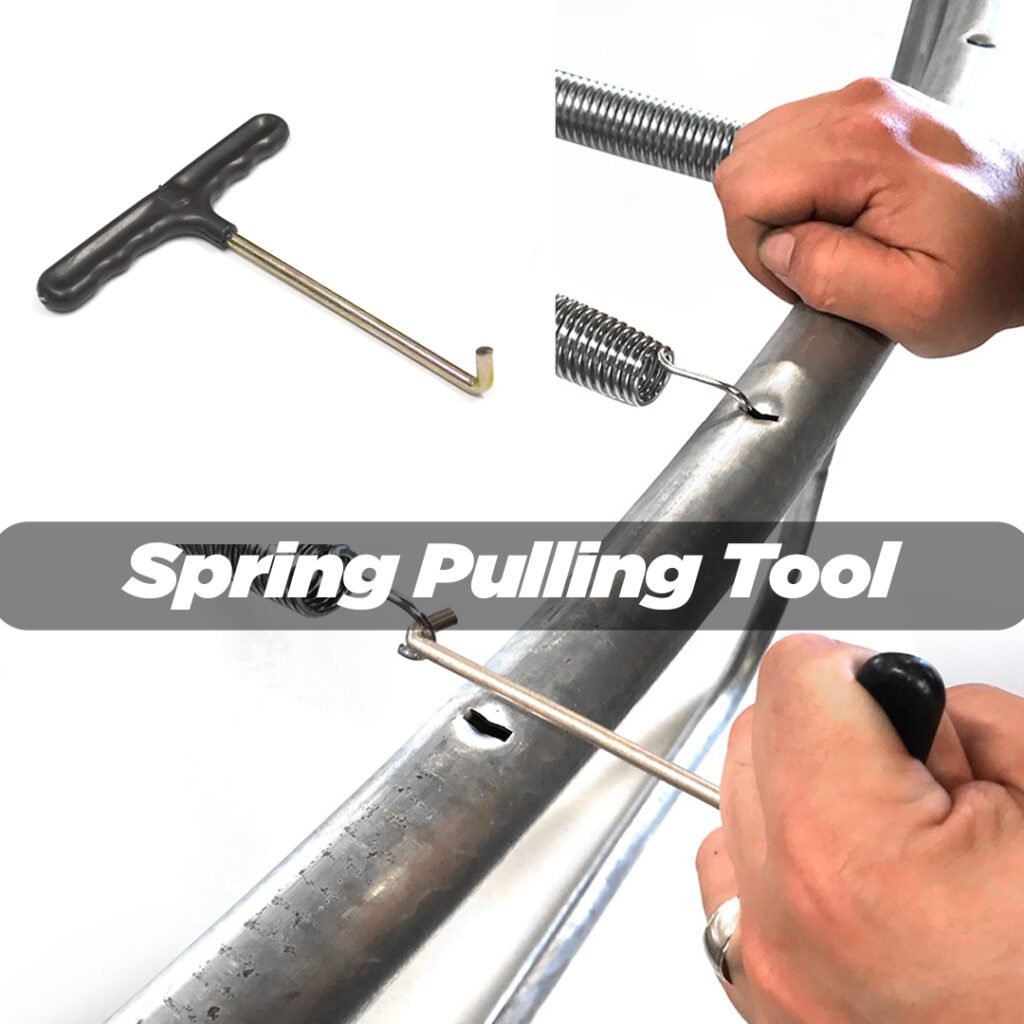
A spring-pulling tool is a handy accessory to have for assembling your trampoline. It can simplify the process and make installing the springs much easier, especially for a large trampoline.
A spring-pulling tool attaches to the trampoline frame and pulls the springs into place for you. This saves you from having to manually stretch each spring over the frame, which can require a lot of strength and effort, especially for the springs in the middle of the mat. The tool does the hard work for you, allowing you to efficiently attach all the springs in a fraction of the time. Here are some tips for using a spring-pulling tool effectively:
- Choose a high-quality spring-pulling tool made of durable steel. Cheaper tools may bend or break under tension.
- Have an extra set of hands. While a spring-pulling tool reduces effort, installing springs still requires manipulating the mat, springs, and tool. An extra person makes the job much easier.
- Work systematically around the frame. Don’t skip springs or work in a random order. Start at one point and work your way around. This will ensure even tension and the proper spring pattern.
- Use slow, controlled motions. Quickly pulling springs into place can cause the mat to become uneven or the springs to pop out of place. Take your time for the best results.
It is crucial to know how to use a spring pulling tool because when it is used properly, it can turn trampoline assembly into an easy, do-it-yourself job.
Conclusion
In a nutshell, upgrading your trampolining fun is all about choosing the right accessories. A safety net keeps you secure, and a weather cover protects your trampoline. Anchors make sure it stays steady, and a sturdy ladder lets everyone join in safely. Don’t forget trampoline socks for better grip during jumps.
For an added thrill, trampoline scooters are exciting, but safety gear is a must. Lastly, a tool for pulling springs makes assembling easy. With these top-notch accessories, your trampoline turns into a place of joy and safety. Let the bouncing fun begin!
FAQ's
Are you required to have a net on a trampoline?
While not mandatory, it’s highly recommended to have a net on a trampoline for safety. Nets prevent falls and enhance overall user protection, especially for children. Following safety guidelines ensures a secure and enjoyable bouncing experience.
Do you need a ladder for a trampoline?
While not essential, a ladder provides convenient access to the trampoline, especially for younger users. It promotes safe entry and exit, reducing the risk of accidents. Ensure the ladder is sturdy and securely attached to enhance overall safety.
What are the benefits of trampoline socks?
Trampoline socks offer enhanced grip and traction, reducing the risk of slipping while bouncing. They also provide an additional layer of hygiene, preventing dirt and debris from accumulating on the trampoline surface. Using trampoline socks enhances the overall bouncing experience.
Can you use a trampoline cover with an enclosure?
Yes, a trampoline cover can be used with an enclosure. Ensure the cover is compatible with the specific trampoline model and that it accommodates the enclosure. Using both provides comprehensive protection, extending the trampoline’s lifespan and ensuring a clean surface for bouncing.
How many trampoline stakes do I need?
The number of trampoline stakes needed depends on the trampoline size and the ground conditions. Generally, four to six stakes are recommended for stability. Ensure they are securely anchored to prevent the trampoline from shifting during use, especially in windy conditions.

